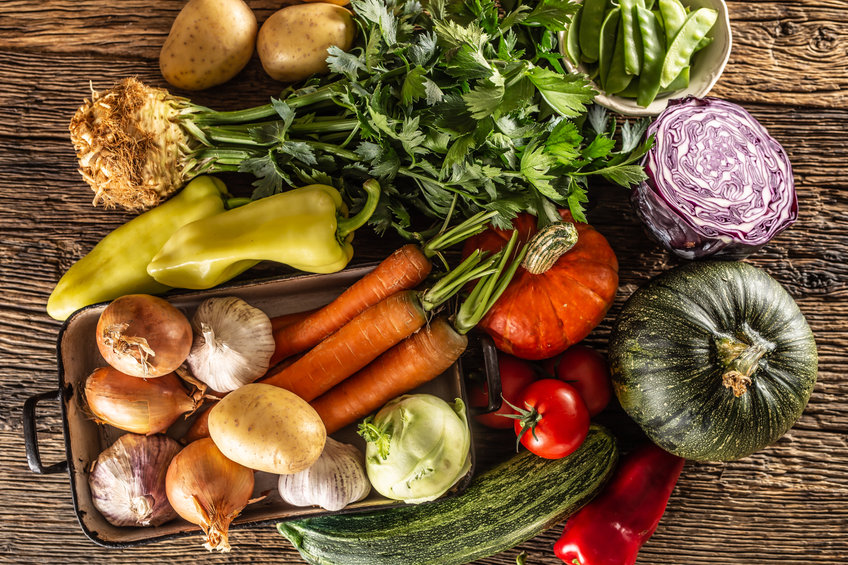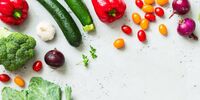Every year, several billions of dollars worth of food are wasted due to inadequacies in the post-harvest handling of food. These wastages have a widespread impact on several nations, societies, and economies. Apart from immediate monetary loss caused by improper post-harvest handling of food, it also greatly impacts our ability to feed impoverished and malnourished populations that can benefit greatly from quality food. Post-harvest technology is integral to a variety of industries that rely on food processing, manufacturing, and commercial food businesses such as restaurants.
Post-harvest processing entails the use of appropriate scientific methods to help preserve food until it reaches the consumer. We discuss the various processes involved in the post-harvest technology of fruits and vegetables to help you understand the science and rationale behind it all. We also list the reasons for the deterioration of various fruits and vegetables to help you get an idea about the freshness level required while operating a commercial food business.
What is Post-harvest Technology?
Fruits, vegetables, and several other farm-grown foods are bound to undergo several physical, chemical, and biological processes that cause accelerated deterioration of their quality. With each passing day, the fruit or vegetable becomes relatively less consumable - unless the natural processes of deterioration and decay are kept at bay. Post-harvest technology aims to reduce the perishability of these foods by using a combination of effective management and processing techniques. Post-harvest technologies involve three integral objectives:
- Maintenance of texture, flavor, appearance, and nutritional value
- Reduction of losses between the harvest season and consumption
- Ensuring food safety and security
Since all operations cannot benefit from large-scale processing machinery like dehydrators or mechanical threshers, post-harvest technology also entails small-scale, and ingenious methods to ensure lengthy shelf lives of food produced during harvesting season.
The Importance of Post-harvest Technology of Fruits & Vegetables
Harvested fruits and vegetables tend to undergo a large amount of qualitative and quantitative degradation following the harvest season. Whether it’s inadequate storage, rash handling, insufficient packaging, or improper transportation methods, losses affect everyone across the value chain. Most fruits and vegetables are transported in a state where they’re perishable and are prone to physical damage during the journey from the farm to the plate. Post-harvest technology can provide the right handling, packaging, and transportation to ensure quality, quantity, and safety preservation. Post-harvest technologies also have important economic implications, as food processing industries can create several thousands of jobs in the rural parts of nations. The benefits gained from the implementation of effective post-harvest methods are sure to promote the growth and development of rural economies in developing nations that still rely heavily on agriculture.
Activities & Processes Involved in Post-harvest & Harvest Technologies
The activities involved in harvest technologies and post-harvest processes fall under two important categories that make them easier to grasp:
- Technical & Applied Activities: These activities require practical, scientific, and on-field know-how to implement. These activities include:
- Harvesting
- Natural/ Artificial drying
- Threshing
- Cleaning
- Dehydration
- Final processing
- Storage
- Economic & Value-based Activities: Economic activities within post-harvest technology entail the management of material and the logistics associated with its transport. Economic post-harvest activities entail:
- Administration
- Transport
- Quality assurance
- Sales & marketing
- Nutritional management
Prime Causes of Post-harvest Degradation
The primary reasons for loss following the harvest period are understood to be twofold:
- Physico-chemical Factors: Extremely high or low temperatures, bruising of fruits & vegetables due to improper handling, rubbing or abrasion, and pollutants like noxious gases.
- Biological Factors: Diseases, oxidation, senescence, and natural deterioration processes.
An effective post-harvest strategy must include the prevention of all causes of deterioration and degradation for the complete period ranging from production to consumption.
Processes Involved in Post-harvest Technology of Fruits & Vegetables
The steps involved in the processing of fruits and vegetables following the harvesting season are:
- Dumping: This step involves the dumping of picked fruit and vegetables in either water or a dry container to collect all the produce in a single place. Water dumping makes it easier to avoid bruising and injury of fruit and avoids initial losses. Vegetables on the other hand require dry dumping and post-harvest drying.
- Primary Sorting: The removal of diseased, decaying, or anomalous produce forms the next step. Removing diseased fruits & vegetables prevents the spread of the pathogens to other fruits in the lot. It also avoids additional transportation costs incurred by fruits that don’t meet the quality standard.
- Threshing: All produce needs to be threshed to remove the fruits & vegetables from branches and other plant elements. Fruits can be threshed either manually or mechanically, depending on the type of fruit and the extent of the operation.
- Washing: Cleaning with appropriate chemical treatments and solutions can help kill off harmful bacteria and other disease-causing germs. The process commonly involves washing produce in a chlorine solution.
- Grading: Fruits & vegetables are graded based on their sizes and sorted into different boxes or crates to help segregate them better. Grading helps producers and retailers maintain uniformity of the product.
- Processing: Certain items in produce require processing, this can range from skin peeling to cooking. These processes can be carried out either manually or by machines involving either physical or chemical methods.
- Treatment & Packaging: Several varieties of fruits and vegetables need to be treated right before packing to avoid diseases and rot-causing bacteria. Often, vaporized heat treatment is provided before the produce is packed. Appropriate packaging should take into consideration the nature of produce, the weight of packaging, costs, and sustainability.
- Ripening: Artificial ripening can be induced in certain fruits and vegetables just before retailing the produce at the markets. Either ethylene or ethylene-releasing chemicals can be applied to initiate ripening.
Cause of Decay in Common Fruits & Vegetables
To help you understand the importance of post-harvest technology, we list below the causes of degradation of commonly used fruits and vegetables:
- Green leafy vegetables: Cabbages, spinach, scallions, and lettuce can go bad due to a lack of moisture, yellowing, bruising, and high rates of respiration.
- Roots & Tubers: Potatoes, beets, onions, garlic, carrots, and yams are lost to sprouting, bruising, insufficient treatment, and dehydration.
- Flower Vegetables: Cauliflowers, artichokes, and broccoli deteriorate due to the loss of florets, yellowing, mechanical injury, and decay.
- Immature Fruits: Gourds, peppers, tomatoes, eggplants, and okras can decay because of dehydration, ripening, bruising, and extreme temperatures.
- Mature Fruits: Apples, oranges, bananas, melons, and grapes are commonly lost to dehydration, extreme temperatures, over-ripening at harvest, bruising, and disease.
Whether you’re running a retail business, a grocery store, or a restaurant, knowledge of post-harvest technology is integral to preserving the produce you procure. Not only does this help you avoid losses, but also helps you run a responsible business. Since large processing units are not feasible for limited operations like commercial food businesses, consider deploying walk-in combination boxes and walk-in freezers. These units can help you keep your produce fresh, and packed with nutrients so you can always be sure of serving quality food to all of your customers.












